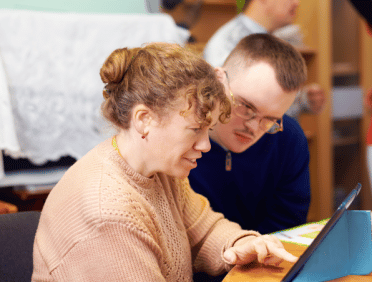Safeguarding FAQs: Addressing Common Concerns in the UK
Safeguarding is an important part of safeguarding people, especially the vulnerable, from harm. In the United Kingdom, safeguarding measures are extensive and varied, encompassing a wide range of sectors, including health, education, social services, and more.
What is safeguarding?
Safeguarding is the process of preserving people’s health, well-being, and human rights while also allowing them to live free of violence, abuse, or neglect. It is not restricted to children but also includes adults who may be at risk owing to age, disability, illness, or other vulnerabilities.
Who is responsible for safeguarding?
Everyone is responsible for ensuring safety. Several agencies, organisations, experts, and individuals play important roles in safeguarding, including but not limited to:
- Government Bodies: Examples include the Departments of Education, Health and Social Care, and the Home Office.
- Local authorities are responsible for organising and managing safeguarding measures within their respective areas.
- Educational Institutions: Schools, colleges, and universities have a responsibility to protect students.
- Healthcare Providers: Including hospitals, clinics, and general practitioners.
- Social services assist and safeguard vulnerable people, such as children, families, and disabled adults.
- Community and voluntary organisations frequently offer frontline services and support to vulnerable people.
- Individuals: Everyone has a responsibility to identify and report safety hazards.
What Are the Signs of Abuse and Neglect?
Recognising signs of abuse or neglect is critical for timely intervention and support. Common indications can include:
- Physical Signs: Unexpected injuries, bruises, fractures, or indicators of starvation.
- Emotional Signs: Withdrawal, anxiety, depression, or abrupt changes in behaviour.
- Financial Signs: unexplained changes in financial status, asset exploitation, or misuse.
- Neglect: poor hygiene, a lack of appropriate attire, or substandard living conditions.
- Sexual abuse: unexplained sexually transmitted illnesses, genital injuries, or inappropriate sexual behaviour.
What Should I Do If I Suspect Abuse or Neglect?
If you suspect someone is being abused or neglected, it’s essential to take action promptly. Here are steps you can take:
- Report: Contact the relevant authorities or organisations, such as your local council’s safeguarding team or the police.
- Document: Keep careful notes on your observations, including dates, times, and any proof you may have.
- Support: Provide assistance and reassurance to the individual while avoiding approaching the accused abuser directly.
- Confidentiality: Maintain confidentiality while prioritising the safety and well-being of the individual in danger.
- Follow-up: Stay updated on the status of any investigations or interventions, and continue to offer assistance as needed.
Safeguarding Frequently Asked Questions (FAQs)
Yes, safeguarding training is regulated and required in the United Kingdom. Various legislation and regulations require organisations, particularly those that provide services to vulnerable people, to ensure that their employees get sufficient safeguarding training and processes.
Failure to comply with these rules might result in legal ramifications and jeopardise the safety and well-being of those under their care.
The Care Act 2014 is an important piece of UK legislation that oversees the delivery of social care services. It imposes a legal obligation on local governments to protect adults in danger of abuse or neglect. Its provisions include supporting individuals’ well-being and combating abuse and neglect.
The Act also specifies local authorities’ responsibility for conducting safeguarding investigations and offering assistance to those affected.
The Children’s Act Care Standards Act 2000 is legislation that aims to improve the quality of childcare services in the United Kingdom. It creates a regulatory framework for childcare providers, including requirements for staffing, facilities, and care methods. Children’s safety and well-being are prioritised.
The Act establishes standards for safeguarding policies, procedures, and training in childcare settings to ensure the safety and protection of children in their care.
Section 22 of the Care Act of 2014 specifies local authorities’ responsibility to conduct investigations when they have grounds to think that an adult in their region is experiencing or is in danger of abuse or neglect. This includes performing safeguarding investigations, working with relevant agencies, and taking appropriate measures to keep the individual safe.
Section 22 emphasises the value of proactive intervention and teamwork in protecting vulnerable adults.
Adults at risk are defined under the Care Act of 2014 as those who require care and support but are unable to protect themselves from abuse or neglect. This includes people who are elderly, disabled, have mental health concerns, or are otherwise vulnerable. The Act imposes a legal obligation on local authorities to protect vulnerable persons, regardless of their personal circumstances or housing arrangements.
The four safeguarding tasks stated in the Childcare Act address childcare providers’ obligations to guarantee the safety and well-being of children in their care.
These duties include:
- Implementing rules and procedures to protect children from damage, abuse, and neglect.
- Ensure that employees receive enough training on safeguarding techniques and protocols.
- Taking immediate action to address any concerns or accusations of abuse or neglect.
- Collaborating with relevant agencies and authorities to help vulnerable children and enhance their well-being.
The Children’s Act 2004 is a significant piece of legislation that tightens the legal framework for protecting and promoting children’s welfare in the United Kingdom. It expands on the Children Act of 1989 and makes important modifications to child protection measures. The Act emphasises the value of collaboration, multi-agency cooperation, and early action in child safety.
It also sets up Local Safeguarding Children Boards (LSCBs) to coordinate efforts and monitor local safeguarding measures.
The Health and Social Care Act 2012 modifies England’s healthcare and social care systems. It contains requirements aimed at improving the quality and safety of care services, such as safeguarding measures. The Act emphasises patient and service user involvement, openness, and responsibility.
It also enhances the regulatory framework for hospital and social care providers, ensuring that they satisfy critical quality and safety criteria, such as safeguarding responsibilities.
Two essential statutory documents concerning safeguarding are:
The Care Act 2014
This legislation establishes the legal foundation for protecting adults at risk of abuse or neglect in England. It describes the responsibilities of local governments, care providers, and other relevant agencies in protecting vulnerable persons and supporting their well-being.
The Children Act 1989
This legislation establishes the legal foundation for protecting and promoting the well-being of children in England and Wales. It outlines the roles of local governments, courts, and other agencies in guaranteeing the safety and protection of children in danger of harm or neglect.
The Care Act 2014 is a landmark piece of legislation in the United Kingdom that aims to modernise the social care sector. It implements a number of initiatives to improve the well-being of people who need care and support, including strong safeguards against abuse and neglect. The Act imposes a statutory duty on local governments to guarantee the safety and protection of adults in danger of abuse or neglect.
It specifies the roles of local governments in conducting safeguarding investigations, coordinating responses, and giving assistance to people affected. The Act emphasises the need for prevention, early intervention, and collaborative working to protect vulnerable adults.
The Children Act of 1989 is the fundamental legislation controlling child protection in the United Kingdom. This legislation offers a legal foundation for protecting and promoting children’s welfare. It outlines the roles and responsibilities of local governments, courts, and other agencies in protecting the safety and well-being of children who are in danger of harm or neglect.
Building on the Children Act of 1989, the Children Act of 2004 implemented more improvements. These revisions aimed to boost child safety measures and improve collaboration among child welfare agencies.
The Care Act of 2014 covers adult safeguarding in the United Kingdom. This act makes local governments legally responsible for protecting adults who are at risk of abuse or neglect. It lays out a clear framework for identifying, responding to, and preventing abuse and neglect of vulnerable adults.
The Care Act of 2014 outlines the roles of local governments, care providers, and other relevant entities in protecting individuals and supporting their well-being.
The six principles underpinning the Care Act 2014’s safeguarding approach are as follows:
Empowerment: Ensure that vulnerable adults are supported and encouraged to make their own decisions and choices.
- Prevention: taking proactive measures to prevent abuse and neglect from occurring.
- Proportionality: Ensure that responses to safeguarding concerns are appropriate for the degree of danger and need.
- Protection: taking measures to safeguard vulnerable adults from abuse and neglect.
- Partnership: working with appropriate agencies and organisations to successfully coordinate safeguarding responses.
- Accountability: Individuals and organisations must be held accountable for their actions and decisions relating to the protection of vulnerable adults.
Safeguarding policies and procedures are critical in early childhood institutions to protect the safety and well-being of children. These rules offer personnel clear guidance for recognising, responding to, and reporting safeguarding problems effectively.
Early childhood facilities can provide a secure and supportive environment for children by implementing strong safeguarding policies and procedures that reduce the risk of damage or abuse and enhance their well-being.
Effective safeguarding methods also serve to instill trust and confidence in parents and carers, reassuring them that their children are safe.
In a nursery setting, safeguarding refers to a variety of procedures designed to ensure the safety, protection, and well-being of young children. This includes putting in place policies and procedures to prevent abuse, neglect, and harm, as well as fostering strong relationships and a safeguarding culture in the nursery.
Nurseries’ safeguarding strategies may include staff training, risk assessments, clear communication routes, and effective reporting methods for safeguarding concerns. Nurseries should collaborate with parents, carers, and appropriate authorities to promote children’s well-being and properly resolve any safeguarding concerns.
The Children’s Acts 1989 and 2004 have a significant impact on safeguarding methods in the United Kingdom. These pieces of legislation form the legal foundation for protecting and promoting children’s welfare. The Children Act of 1989 established essential concepts, including the paramountcy principle, which prioritises the best interests of the child in decision-making procedures.
The Children Act of 2004 expanded on these ideas by implementing measures to strengthen child protection systems and increase collaboration and cooperation. Together, these Acts lay the groundwork for successful safeguarding measures, ensuring that children’s rights and well-being are protected.
A safeguarding policy is a document outlining an organisation’s commitment to protecting and promoting the well-being of people who are in danger of abuse or neglect. It specifies the methods and standards that personnel should use to successfully identify, respond to, and report safeguarding problems.
A safeguarding policy often outlines safeguarding principles, definitions of abuse and neglect, reporting methods, and roles and duties. A safeguarding policy could include information about staff training requirements, risk assessments, procedures for documenting and investigating safeguarding concerns, and references to applicable legislation and guidelines.
Child neglect or abuse indicators can vary depending on the type and intensity of the abuse, as well as the child’s specific circumstances.
However, some typical symptoms that may signal that a child is being neglected or mistreated are:
- Unexplained injuries or bruises, especially if they happen frequently or in strange places.
- Changes in behaviour or personality, such as withdrawal, anxiety, or aggression.
- Fear of specific people or a reluctance to return home or attend school.
- Poor hygiene and unexpected weight loss.
- Inappropriate sexual activity or knowledge.
- Being left alone for long periods of time is an example of a lack of supervision and care.
- Unexplained absence from school or other activities.
- Disclosure of abuse or neglect, whether directly or indirectly.
- It is crucial to highlight that these symptoms should be studied in conjunction with other criteria, as they may not always imply abuse or neglect. Any concerns regarding a child’s well-being should be reported to the proper authorities for further inquiry.
If someone feels that a child is in danger of damage or abuse, it is critical to take prompt action to protect the child’s well-being. The first step is to notify the proper authorities, such as the local council’s children’s social care services or the police. Individuals may also seek help and guidance from designated safeguarding leads in their organisation or community.
It is critical to document any observations or disclosures made by the child and to adhere to established safeguarding processes and regulations. To ensure children’s safety and protection from danger, a timely and coordinated response is required.
Section 47 of the Children Act of 1989 imposes a statutory obligation on local governments to examine cases where they have reasonable grounds to believe that a child is suffering or is likely to suffer serious harm.
This clause authorises local governments to conduct safeguarding investigations and assessments to identify the nature and scope of any threats to the child’s welfare. Section 47 inquiries are undertaken in response to concerns about a child’s well-being and are carried out in consultation with appropriate organisations and professionals.
The purpose of Section 47 inquiries is to safeguard the safety and protection of children who are at risk of harm, as well as to provide appropriate support and intervention when needed.
A safeguarding assessment, also known as a child protection assessment, is a structured process used by social workers or other licenced professionals to identify threats to a child’s wellbeing and recommend suitable interventions.
The assessment often entails gathering information from a variety of sources, including the child, family members, professionals involved in their care, and relevant organisations. This data is used to detect any issues or hazards to the child’s well-being and create a detailed plan to address them.
To protect a child’s entire well-being, safeguarding evaluations follow legal guidelines and entail collaboration with a variety of experts, including healthcare professionals, educators, and law enforcement. This collaborative effort contributes to a more comprehensive approach to child safety.
HBA refers to harmful sexual behaviour in the context of protection. Harmful sexual behaviour is defined as any sexual behaviour exhibited by a kid or young person that is improper for their age or stage of development and may endanger themselves or others.
HBA can cover a wide range of behaviours, from sexualized words and contact to more serious kinds of sexual abuse or exploitation. It is critical to recognise and respond to HBA effectively in order to protect the well-being of children and young people and prevent additional harm or escalation of the behaviour.
A safeguarding concern can be raised without consent if there are reasonable reasons to suspect that a child or adult is in danger of serious damage or abuse. In such instances, safeguarding experts have a legal obligation to act in the individual’s best interests and to prioritise their safety and protection over concerns of consent.
Safeguarding concerns may occur as a result of observations, disclosures, or other evidence indicating a danger of damage or abuse, and such concerns must be reported to the proper authorities as soon as possible. While consent is typically sought when raising safeguarding concerns, it is not always necessary or suitable in cases requiring immediate action to protect the individual’s wellbeing.
Safeguarding problems are often addressed by designated safeguarding experts inside organisations, such as social workers, designated safeguarding leads, and other related personnel.
Their tasks include determining the nature and severity of the safeguarding concern, implementing appropriate safeguarding procedures and protocols, collaborating with relevant authorities and specialists, and offering support and intervention to protect the individual’s wellbeing.
Safeguarding experts play an important role in ensuring the safety and protection of children and people at risk of harm or abuse, as well as supporting fast and efficient responses to safeguarding issues.
The four main types of abuse outlined in safeguarding protocols are:
Physical abuse
This includes causing physical pain or injury to a child or adult, such as beating, kicking, shaking, or using inappropriate physical constraint.
Emotional abuse
This includes behaviours or activities that cause emotional or psychological harm, such as verbal abuse, humiliation, intimidation, or manipulation.
Sexual abuse
This includes any type of sexual activity or behaviour performed on a kid or adult without their consent, such as rape, sexual assault, or exploitation.
Neglect
This includes neglecting to provide a child or adult’s basic needs for care, assistance, and supervision, which can affect their health, development, or well-being. Neglect might include failing to provide adequate food, clothing, shelter, medical care, or emotional support.
Identifying and resolving various forms of abuse is critical for the safety and well-being of children and people who are at risk of injury or exploitation.

Got a question?
Get in contact and we will
get back to you











